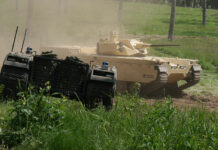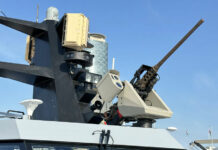In an attempt to address continuous Palestinian rocket attacks, Israel is embarking on an ambitious development program to develop a missile system capable of intercepting short range rockets in flight, protecting population centers and sensitive installations currently subjected to repeated and deadly attacks by Katyusha or improvised Qassam or rockets. In recent years Israel suffered over 6,000 rocket attacks, most of them short range rockets fired fired by Iranian and Syrian backed Hezbollah and Palestinians terror groups.
Israel has suffered Katyusha attacks since the mid 1970s, as Palestinian guerillas, based in South Lebanon used short range 107mm rockets to bypass the border obstacle (‘electronic fence”) established along the Lebanese border, to prevent terrorist infiltrations.
For 30 years Israel avoided the decision and commitment to establish adequate defenses against such threats. Israel willingly left this capability gap open, despite spending tens of millions of dollars on a joint program with the US to develop laser defenses to counter rocket threats. The prevailing argument was that the risks of rocket attacks did not justify diverting the huge funding from other, higher priority programs.
The recent war in Lebanon, and the IDF failure to put a stop to the continuous attacks of improvised Qassam rockets from the Gaza strip, despite unchallenged domination from the air. Political pressure which mounted after the 2nd Lebanon war, drove the Minister of defense, Amir Perez to demand adequate answers without further delay.
A committee, headed by former Director General of the MoD, and future Chief of Staff Major General Gabi Ashkenazi, evaluated several options proposed by four companies, and today recommended to select a system proposed by RAFAEL, as offering an all-weather capable solution, at the lowest risk, within relatively a short development cycle. The development and procurement cost of the entire system is estimated at about US$ 0.5 billion, spent over three to five years.
On February 1, 2007 the Israeli Ministry of Defense (MoD) selected RAFAEL to develop the system that could mitigate the rocket threat. Called “Iron Cap” the system will address the threat of short range rockets, including Qassam improvised rockets and Katyushas fired by Palestinian and Hezbollah guerillas from Gaza and South Lebanon. The mobile Iron Cap system will most probably will consist of mobile radar systems, battle management center and missile firing units employing a version of a yet unspecified number of missiles, to be modified into rocket interceptor. The system will utilize a new radar developed at IAI’s Elta, capable of tracking multiple targets and discriminate between benign threats and those threatening the protected targets.
The system should have a sophisticated battle management capability, track multiple targets from rocket salvos, plotting the trajectories of each rocket, identifying those which pose a most critical threat and engaging them effectively, over neutral area, therefore reducing collateral damage on the ground. The system’s radar and battle management elements will integrate two types of interceptors – one designed to defeat ultra-short-range rockets flying at low rajectories and another, designed to intercept long medium and range rockets, developed for the”Magic Wand” system.
RAFAEL has already embarked on another missile defense program known as Magic Wand, which will use the new Stunner missile. “Iron Cap” is expected to use a different, much smaller interceptor, which will cost about about $30,000 each. Although the MoD selected the system to be developed, an agreement on the funding is yet to be reached with the Ministry of Treasury and approved by Prime Minister, Ehud Olmert. And this could prove to be quite a challenge. Although Israel’s defense budget for 2007 was increased, most of the additional money will support procurement for replenishment of stores used during the recent conflict, acquisition of high priority systems and increased training activities. Allocating the resources for the “Iron Cap” could face a significant challenge.
Once all programs are completed, Israel will have a three-tier missile and rocket defensive systems in place. The operational Arrow system, capable of defeating ballistic missiles at high altitude, within or above the earth atmosphere, at ranges of hundred kilometers from the Israeli border. Development and production for Arrow were funded jointly by the U.S. and Israel.
“Magic Wand”, currently in development under cooperation between Israel and the USA, as a joint venture between RAFAEL and Raytheon, will address short range missiles and long range rockets (ranges of 40 – 200km), such as the Iranian made Zilzal 2 and Fajr 5, deployed by Hezbollah in Lebanon. From their positions in Lebanon and Syria, such weapons can target most of the Israeli population centers and strategic sites.
“Iron Cap”, selected today will offer defense against short range threats, including Qassam and Katyusha, such as the 107mm rockets, which present the most irritating and continuous threat to cities and settlements along the Israeli Northern and Western borders. Iron Cap will address threats at ranges of ‘tens of kilometers’, overlapping the Magic Curtain’s capabilities at the lower end. The system will share the same radar and battle management system of the “Magic Wand”.
















